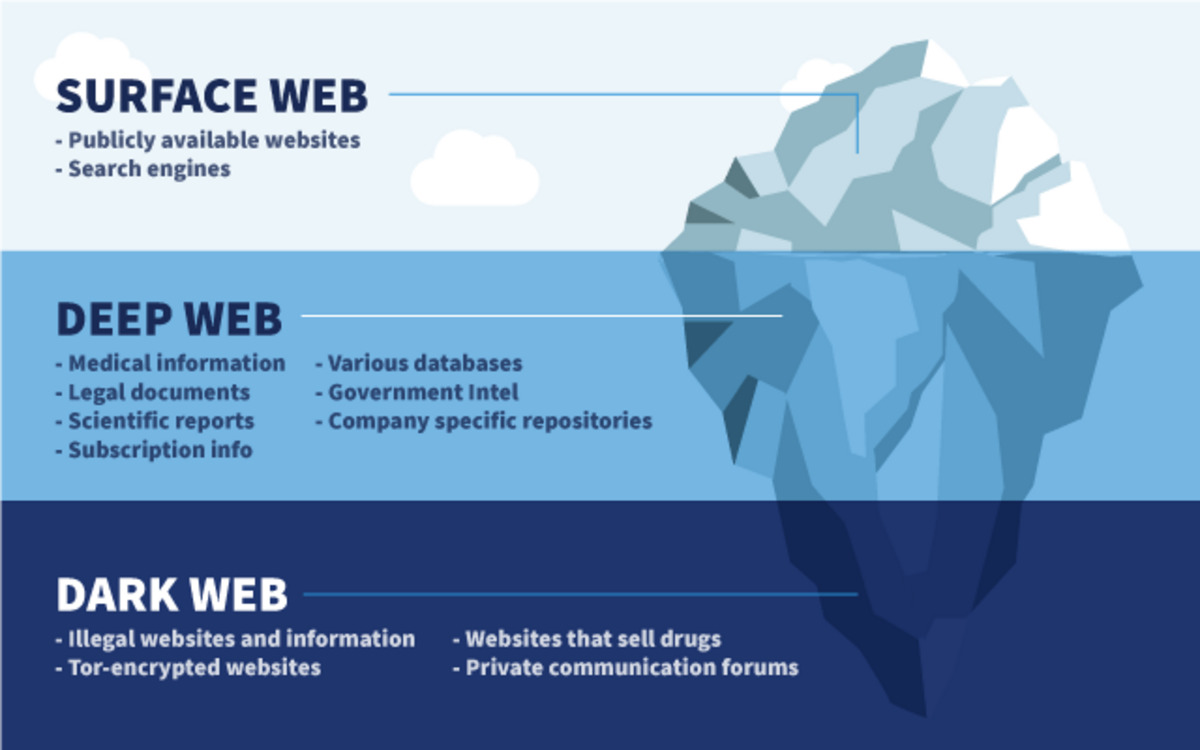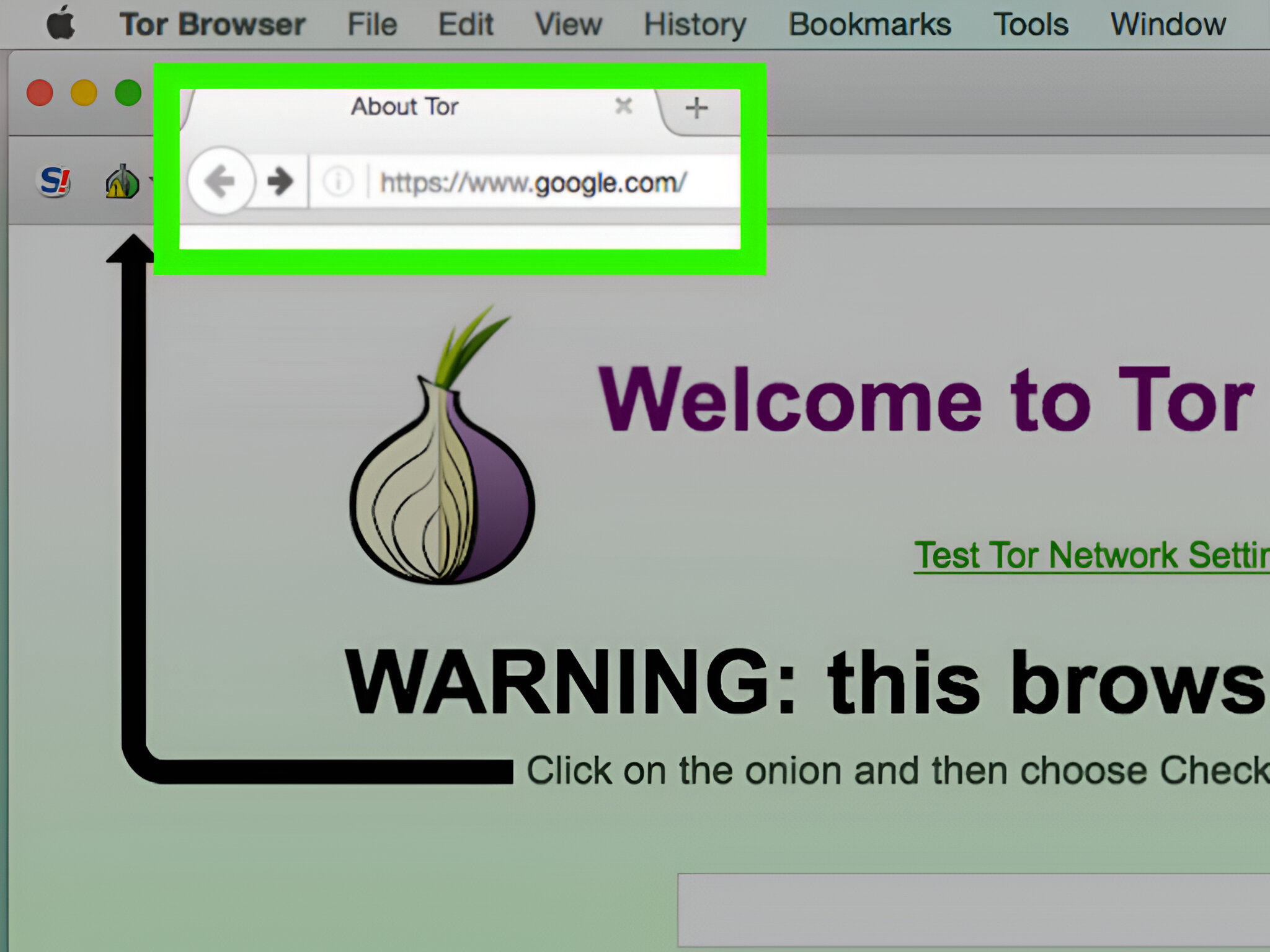Introduction
The Dark Web has gained notoriety as a hidden enclave of the internet, shrouded in secrecy and intrigue. It is a realm beyond the reach of conventional search engines that offers anonymity and privacy to its users. With its underbelly of illicit activities and hidden marketplaces, the Dark Web has become a subject of fascination for many.
While we don’t endorse or encourage illegal activities, it is important to understand how to navigate through the Dark Web and conduct searches effectively. Whether you are a journalist, researcher, or just curious about this hidden part of the internet, learning how to search on the Dark Web can be a valuable skill.
In this article, we will explore the basics of Dark Web searching, including how to access it, the tools available for searching, and best practices for staying safe. It’s essential to approach the Dark Web with caution, as it contains illegal and dangerous content. However, if used responsibly, it can also provide valuable resources and information.
So, let’s dive into the mysterious world of the Dark Web and discover how to search for what you’re looking for while keeping your digital security intact.
What is the Dark Web?
The Dark Web refers to a part of the internet that is not indexed or easily accessible through traditional search engines such as Google or Bing. It is a hidden network that requires specific software and configurations to access. Unlike the Surface Web, which is the portion of the internet accessible through standard browsers, the Dark Web operates on encrypted networks, allowing users to remain anonymous.
Within the Dark Web, anonymity is a key feature. Users often access the network through specialized software like Tor (The Onion Router) that encrypts internet traffic and masks IP addresses, making it challenging for authorities to track individuals. The Dark Web is also known for being home to numerous anonymous marketplaces that facilitate the trade of illicit goods and services.
While it is true that there are legitimate uses for the Dark Web, such as whistleblowing and anonymous communication, it is essential to recognize that it also harbors illegal activities. Criminal elements exploit the anonymity to engage in activities like drug trafficking, hacking, counterfeit goods, and even human trafficking.
It’s crucial to approach the Dark Web with caution and a firm understanding of its risks. Engaging in any illegal activities within the Dark Web can have severe consequences, both legally and personally. Therefore, it is recommended to proceed with caution and exercise discretion when accessing and using the Dark Web.
Understanding the Basics of Dark Web Searching
Searching on the Dark Web differs significantly from searching on the traditional Surface Web. While search engines like Google rely on indexing web pages and displaying results based on keywords and relevance, the Dark Web operates on a different infrastructure entirely.
One crucial aspect of Dark Web searching is the use of specialized search engines designed specifically for this hidden realm. These search engines, like Tor2Web and Grams, allow users to browse through Dark Web websites and content. However, it’s important to note that these search engines may not index all the hidden services on the Dark Web, and the results can vary.
Another factor to consider is that many Dark Web websites are intentionally hidden and require users to have specific URLs or addresses to access them. These websites often have encrypted URLs with .onion extensions. To find relevant websites, users can explore Dark Web directories, communities, and forums that curate and list various websites on the Dark Web. These directories serve as a valuable resource for discovering specific services and content.
It’s worth mentioning that the content found on the Dark Web can vary widely, ranging from legitimate websites focused on privacy and anonymity to illicit marketplaces and forums. To conduct effective searches, it is essential to have a clear understanding of what you are looking for and navigate the Dark Web with caution.
One critical aspect of Dark Web searching is maintaining personal security and privacy. Given the nature of the content found on the Dark Web, it is crucial to take precautionary measures. This includes using a reliable VPN (Virtual Private Network) for added encryption and connection security, as well as utilizing secure and anonymous communication tools like encrypted messaging apps.
By understanding the basics of Dark Web searching and employing the necessary precautions, users can navigate this hidden realm more effectively while minimizing the associated risks.
How to Access the Dark Web
Accessing the Dark Web requires specialized software and configurations to ensure anonymity and privacy. Here are the steps to access the Dark Web:
- Download and Install Tor: Tor (The Onion Router) is the most widely used software to access the Dark Web. It routes internet traffic through a network of volunteer-operated servers, encrypting the data and making it difficult to trace. Go to the Tor Project website and download the Tor browser to get started.
- Install and Configure Tor: Once you have downloaded the Tor browser, follow the installation instructions. After installation, open the Tor browser. It will automatically connect to the Tor network and create a secure connection.
- Access Dark Web URLs: To access Dark Web websites, you need to obtain the specific URLs, often referred to as “onion addresses.” These addresses are different from standard website addresses and usually end with the .onion extension. You can find onion addresses through Dark Web directories, forums, or communities.
- Enter the Onion Address in Tor: Once you have obtained the onion address of the website you want to visit on the Dark Web, copy and paste it into the address bar of your Tor browser. Click “Enter” to navigate to the website.
- Navigate Websites with Caution: When browsing the Dark Web, exercise caution, as it contains illegal and potentially dangerous content. Avoid clicking on suspicious links or downloading files from untrusted sources. Remember that anonymity does not guarantee safety, so be careful with the information you provide and the interactions you engage in.
It’s important to note that accessing the Dark Web has inherent risks, and engaging in illegal activities can lead to serious consequences. It is crucial to exercise responsible and ethical usage when exploring this hidden part of the internet.
Search Engines in the Dark Web
The Dark Web has its own set of search engines that are designed to navigate the hidden realm and provide users with access to Dark Web websites and content. These search engines operate differently from traditional search engines like Google or Bing, as they are tailored to the specific requirements of the Dark Web.
Some of the popular search engines used in the Dark Web include:
- Tor2Web: Tor2Web is a proxy service that allows users to access Tor-hidden services using a standard web browser. It acts as a bridge between the regular internet and the Tor network, enabling users to access Dark Web websites through a regular URL, without the need for Tor browser installation.
- Grams: Grams is a search engine specifically developed for searching illicit goods and services on the Dark Web. It provides users with a user-friendly interface to search for various illegal items, such as drugs, counterfeit goods, hacking tools, and more.
- Not Evil: Not Evil is a widely used search engine in the Dark Web. It indexes Dark Web websites and provides users with a simple and straightforward search interface to find information, resources, and content across various categories.
It’s important to note that while these Dark Web search engines can provide access to specific websites and content, they may not index all the hidden services available. The Dark Web is vast, and new websites emerge frequently, making it a challenge for any search engine to index all the content.
When using Dark Web search engines, it’s crucial to have a clear understanding of what you are looking for to refine your search queries effectively. Additionally, exercise caution and be aware that the Dark Web contains illegal and dangerous content. Approach the search results with discretion and avoid engaging in any illicit activities.
Remember, while search engines in the Dark Web can assist in your exploration, always prioritize your safety and adhere to ethical guidelines. Proceed with caution and use the information you find responsibly.
Navigating Dark Web Directories
Dark Web directories are curated lists of websites and resources available on the hidden part of the internet. These directories serve as valuable tools for users to discover and navigate through the vast array of content found on the Dark Web. Here are some tips for effectively navigating Dark Web directories:
- Find Reliable Directories: Look for trustworthy Dark Web directories that have a reputation for providing accurate and up-to-date information. These directories often categorize websites and provide descriptions to help users find specific content.
- Explore Categories and Subcategories: Dark Web directories typically organize websites into categories and subcategories, making it easier to discover websites of interest. Browse through the different categories to find relevant resources based on your specific needs.
- Read User Reviews and Ratings: Many Dark Web directories allow users to leave reviews and ratings for websites. Take advantage of this feature to get a sense of the reputation and reliability of a website before accessing it. However, exercise caution as these reviews might not always be authentic.
- Verify Onion Addresses: When using Dark Web directories, it’s essential to double-check the onion addresses of the websites you want to visit. Onion addresses are unique and can be quite complex. Copy and paste the address directly to ensure accuracy and avoid typos.
- Follow Recommendations: Dark Web directories often showcase featured or recommended websites. These recommendations are typically vetted and considered reliable by the directory administrators. Explore these recommendations to find popular and trustworthy resources.
While Dark Web directories provide a convenient way to discover websites, it is important to remember that the content on the Dark Web can be illegal or dangerous. Exercise caution and use your judgment when accessing websites listed in these directories. Do thorough research and verify the reputation and reliability of a website before interacting or engaging with it in any way.
Navigating Dark Web directories can be a valuable method to find specific services, communities, or resources. However, it is crucial to prioritize your safety, be mindful of the content you access, and adhere to legal and ethical guidelines while exploring the Dark Web.
Resources for Anonymous Communication on the Dark Web
Anonymous communication is a crucial aspect of the Dark Web, allowing users to protect their identities and securely interact with others. There are various tools and resources available for anonymous communication on the Dark Web. Here are some of the most commonly used:
- TorChat: TorChat is a decentralized peer-to-peer instant messaging platform that allows users to communicate directly without relying on a central server. It utilizes the Tor network to provide anonymity and encryption for messages exchanged between users.
- SecureDrop: SecureDrop is an open-source platform designed for securely exchanging information and documents with journalists or whistleblowers. It ensures anonymity by leveraging the Tor network and strong encryption protocols.
- Tails OS: Tails OS is a privacy-focused operating system that can be installed on a USB drive or DVD. It routes all internet traffic through the Tor network and includes built-in tools for anonymous communication, such as the Tor Browser and secure messaging applications.
- Ricochet: Ricochet is a peer-to-peer instant messaging application that prioritizes privacy and anonymity. It uses the Tor network for encryption and bounces messages through multiple nodes, making it challenging to trace the communication back to the user.
- ProtonMail: While not exclusive to the Dark Web, ProtonMail is an encrypted email service that offers end-to-end encryption for secure communication. It allows users to create an anonymous email account and send encrypted messages, providing an extra layer of privacy.
These resources are just a few examples of the tools available for anonymous communication on the Dark Web. They offer users various options to protect their identities and communicate securely. However, it is important to remember that despite these tools, complete anonymity on the internet is challenging to achieve.
When using these resources, it is crucial to follow best practices for online security and maintain vigilance. Regularly update software, use strong and unique passwords, and be cautious when sharing sensitive information or engaging in conversations with unknown individuals.
While anonymous communication can provide freedom and security, it is important to use these tools responsibly and abide by legal and ethical guidelines. Remember that engaging in illegal activities will have serious consequences, even on the Dark Web.
Best Practices for Staying Safe on the Dark Web
Given the risks associated with the Dark Web, it is crucial to prioritize your safety and take precautions to protect your identity and digital security. Here are some best practices to follow while navigating the Dark Web:
- Use a VPN: Utilize a reputable Virtual Private Network (VPN) to encrypt your internet traffic and mask your IP address. A VPN adds an extra layer of security and helps maintain your anonymity while accessing the Dark Web.
- Keep Your Software Updated: Regularly update your operating system, web browser, and any other software you use to access the Dark Web. Updates often include important security patches that help protect against vulnerabilities.
- Avoid Clicking Suspicious Links: Be cautious when clicking on links in the Dark Web. Avoid clicking on unknown or suspicious links, as they may lead to malicious websites or phishing attempts designed to steal your personal information.
- Be Selective with Downloads: Exercise caution when downloading files from the Dark Web. Only download files from trusted sources and be sure to scan them with reliable antivirus software before opening.
- Limit Personal Information: Minimize the amount of personal information you share while on the Dark Web. Avoid using your real name, email address, or any personally identifiable information. Adopt a pseudonym or anonymous persona to protect your identity.
- Stay Away from Illegal Activities: Engaging in illegal activities on the Dark Web can have severe consequences. Abide by legal and ethical guidelines, and do not participate in any activities that are against the law.
- Practice Secure Communication: Use encrypted messaging apps and platforms for secure communication on the Dark Web. Avoid sharing sensitive information with unknown individuals and be cautious of potential scams or social engineering attempts.
- Trust Your Instincts: If something feels wrong or too good to be true, trust your instincts and immediately exit the website or platform. Your safety and security should always be the top priority.
While following these best practices can significantly enhance your safety on the Dark Web, it is important to understand that no security measure is foolproof. Always exercise caution, be mindful of the content and websites you access, and stay informed about emerging threats and privacy concerns.
Remember, the Dark Web contains illegal and dangerous content, and exploring it comes with inherent risks. Stay vigilant, prioritize your safety, and only use the Dark Web for legal and ethical purposes.
Conclusion
The Dark Web is a hidden and mysterious realm of the internet that requires specialized tools and knowledge to access. While it holds a certain allure and intrigue, it is crucial to approach the Dark Web with caution and responsibility. Navigating this hidden part of the internet can be a valuable skill for researchers, journalists, and those curious about the depths of the online world.
In this article, we explored the basics of Dark Web searching, including understanding what the Dark Web is and the unique challenges it poses. We discussed how to access the Dark Web using tools like Tor and highlighted the importance of maintaining personal security and privacy.
We also delved into the world of Dark Web search engines and directories, providing insights on how to effectively find the information and resources you’re looking for. We emphasized the need for responsible usage and awareness of the illegal activities that exist on the Dark Web.
Additionally, we discussed the resources available for anonymous communication on the Dark Web and highlighted the best practices for staying safe. These include using a VPN, being selective with downloads, minimizing personal information sharing, and avoiding illegal activities.
As you explore the Dark Web, it is vital to prioritize your safety and adhere to legal and ethical guidelines. Remember that engaging in illegal activities carries significant consequences, both legally and personally. Always exercise caution, be mindful of the content you access, and trust your instincts if something feels off.
By being aware of the risks and implementing best practices, you can navigate the Dark Web more securely and responsibly. Remember that the Dark Web, while fascinating, is also a place where illegal activities thrive. Use your newfound knowledge and skills wisely, focusing on lawful and ethical pursuits.
Keep in mind that the Dark Web is constantly evolving, and new threats may emerge. Stay informed, update your security measures, and remain vigilant while exploring this hidden part of the internet.

























